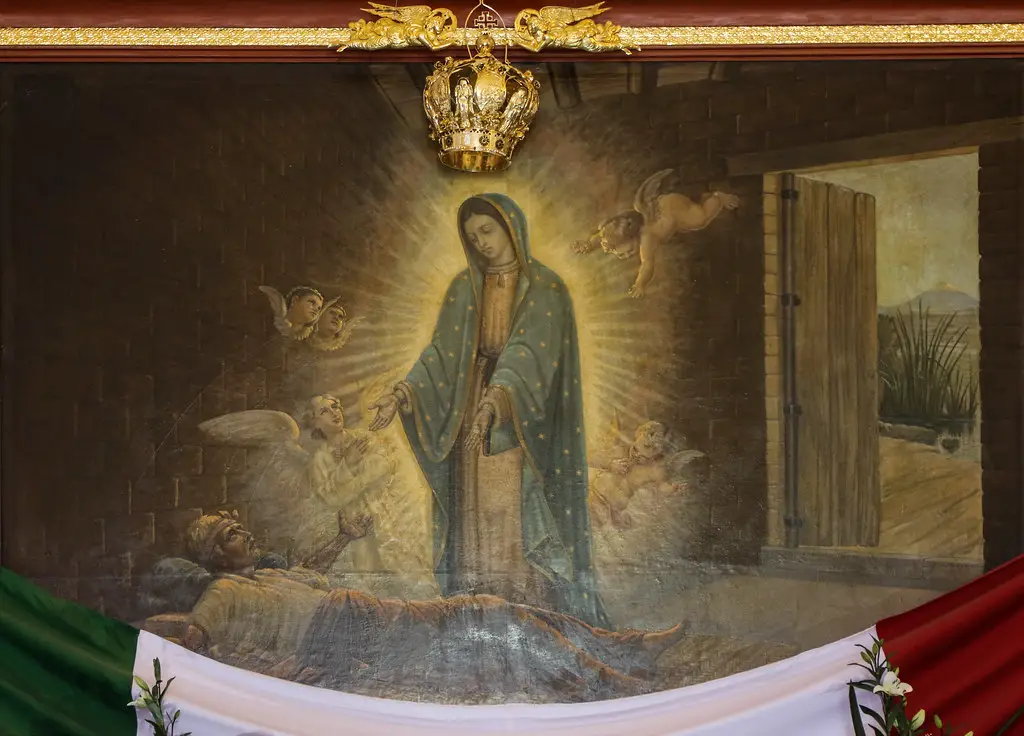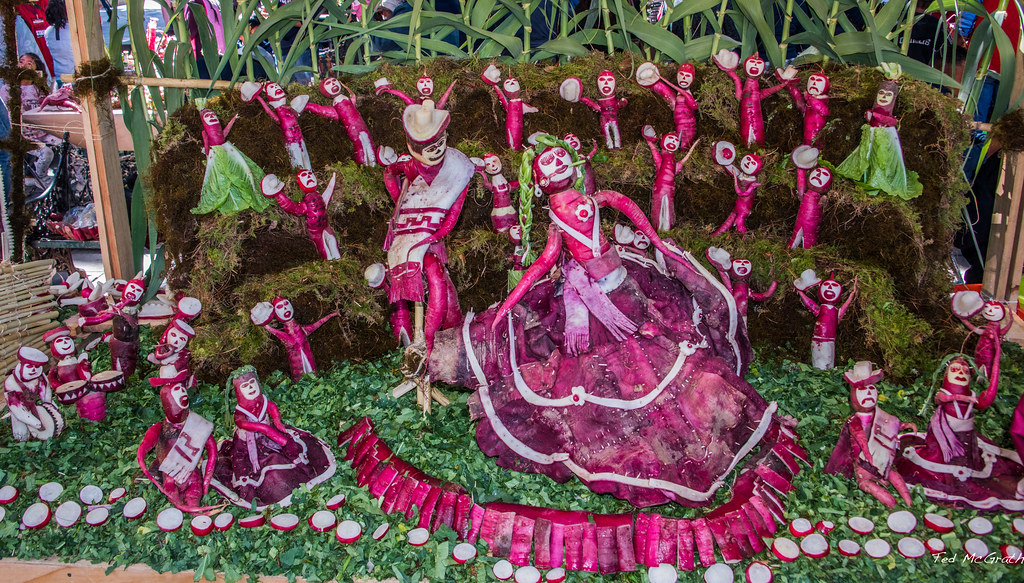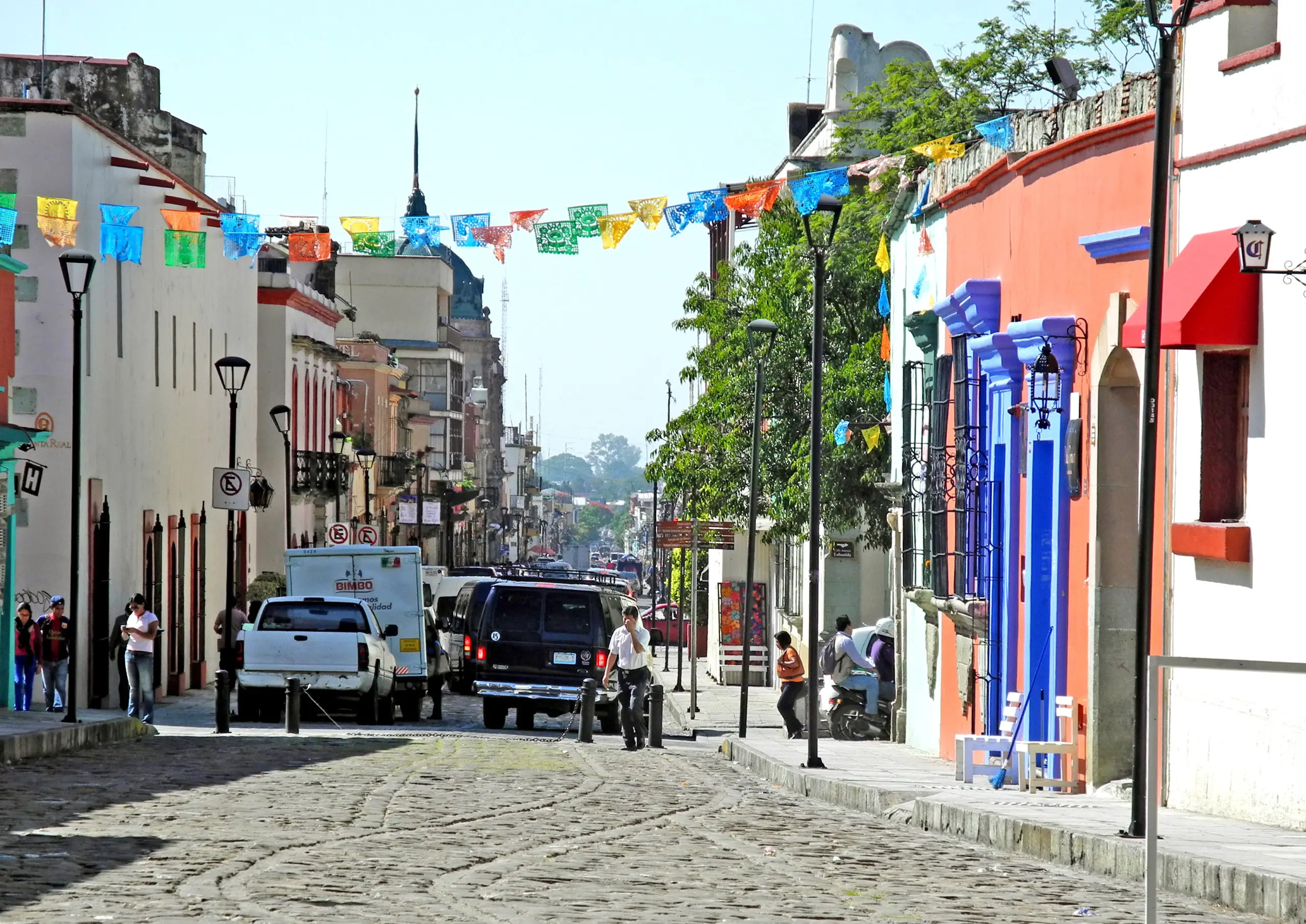December in Oaxaca is a time not to be forgotten. At any time during the month, visitors are likely to run into exuberant calendas – noisy and colorful processions of musicians, dancers, and paper-mache giants, punctuated by booming fireworks. During the Christmas season, many of these celebrations take place at night, accompanied by throngs of devotees carrying candles gleaming through brightly colored lanterns.
Feasts of the Virgin of Guadalupe and the Virgin of Solitude

On December 11 and 12, Oaxacans celebrate the feast day of the Virgin of Guadalupe, Mexico’s patron saint. Early in the morning, parents flock to the plaza in front of Oaxaca’s imposing Cathedral, bringing their children to be blessed. Girls are dressed in miniature versions of the exquisitely embroidered gowns worn by the women of Oaxaca’s seven different regions, while boys dress in the simple garb worn by Juan Diego, the young man to whom the Virgin appeared on December 12, 1531, their beaming faces smudged with penciled-in moustaches. It’s hard not to be touched by the devotion and joy of these families.
Oaxaca’s patron, however, is not the Virgin of Guadalupe, but the Virgin of Soledad, whose feast day is on December 18. The streets leading to the stately Soledad Basilica fill up with hundreds of stands selling food, religious items, CDs, and just about anything else anyone could want. On the 23rd, the carnival atmosphere gives way to a day and night of solemn celebrations honoring the Virgin and her gilded statue, which occupies the place of honor in the Basilica.
Oaxaca’s unique Noche de Rabanos or Night of the Radishes

Soledad’s night is followed on December 23 by Oaxaca’s famous Noche de Rabanos, or Night of the Radishes. This unique celebration evolved long ago from the competition among vegetable vendors to attract customers by carving samples of their wares into amusing forms.
For the Night of the Radishes, Oaxaca’s main square, the zócalo, is ringed by tables on which local artisans assemble sometimes striking scenes depicting aspects of daily life in Oaxaca, each display made entirely from either giant radishes, corn husks, or a type of dried flow known as flor inmortal.
One artisan might recreate an entire wedding, with the bride and groom, priest, guests, and band all carved in loving detail from radishes. Another might show the confrontation between good and evil in the form of a saint warding off a threatening devil. A third might show a farmer and his family patiently tending their animals and tilling their field of corn and beans.
The justifiably famous Night of the Radishes draws tens of thousand of locals and visitors to the zócalo to view this cornucopia of folk art.
The zócalo is packed with visitors once again on Christmas Eve, when motorized floats with scenes lovingly created by all the local churches converge on the square.
All in all, December in Oaxaca is a month to be savored and remembered.

It’s not a matter of where, but when. Time is precious and my time spent living and experience the cultures of this world is what I lust for. This is why I created this website, to share true, genuine experiences and not just typical touristy info. Travel, the love of coffee, and food!
